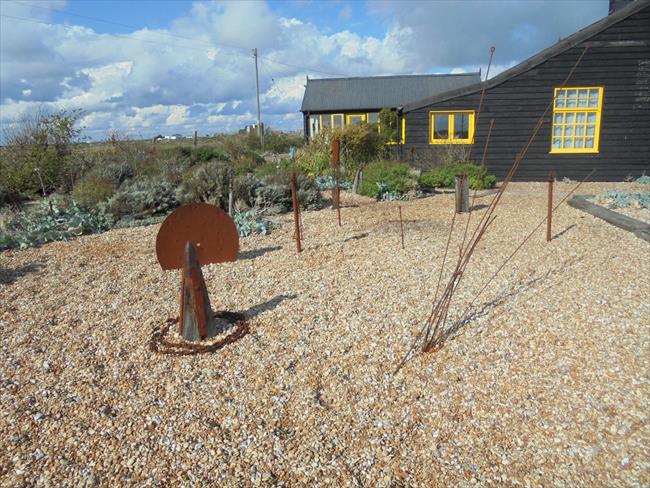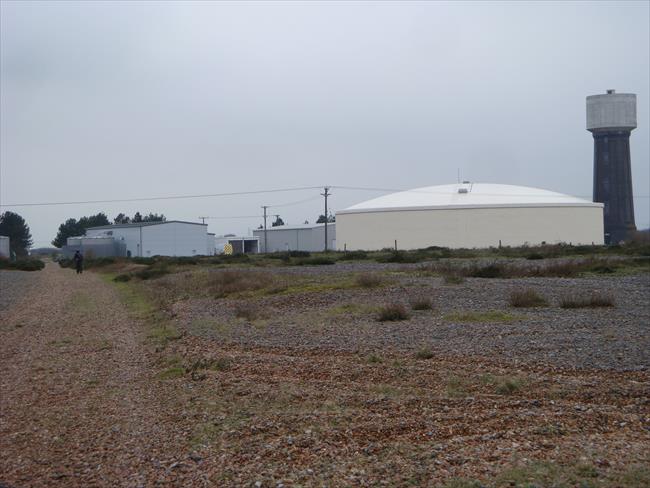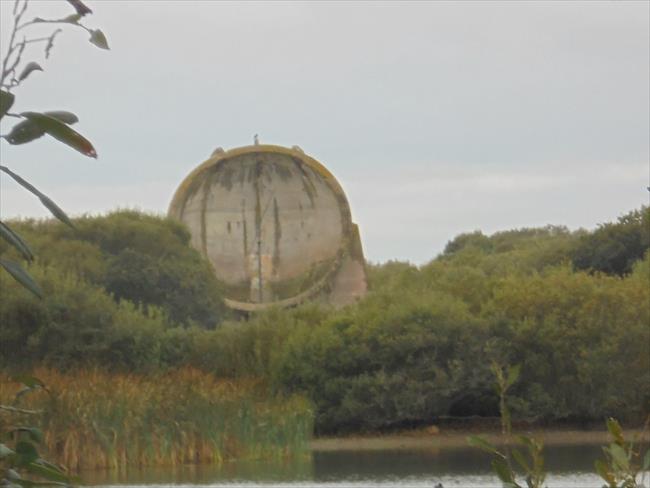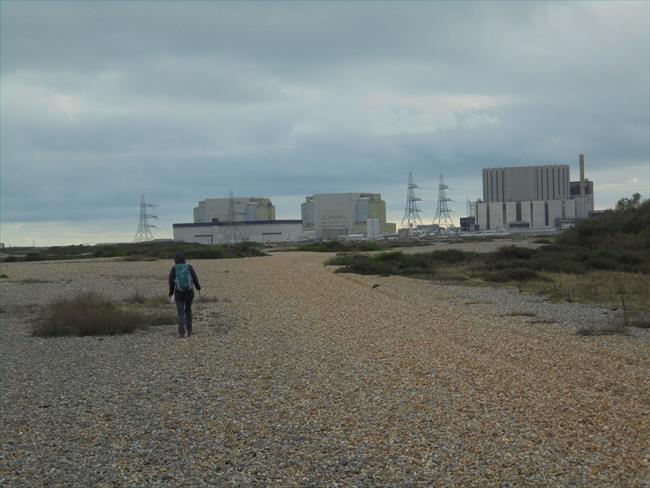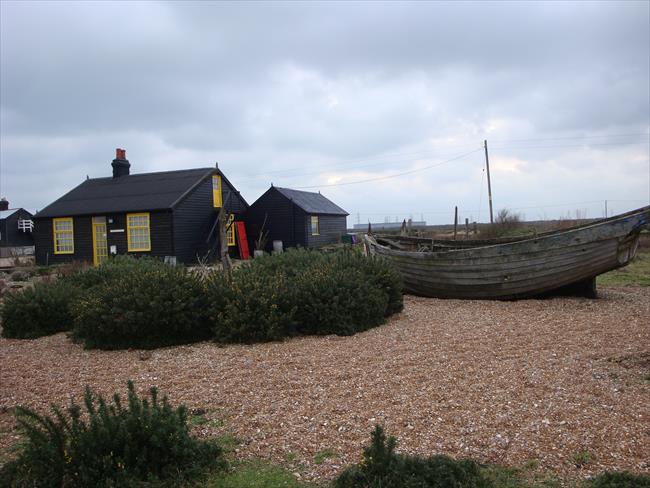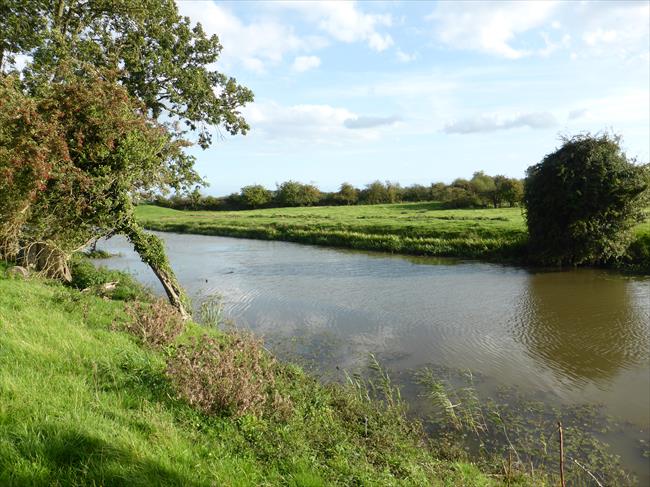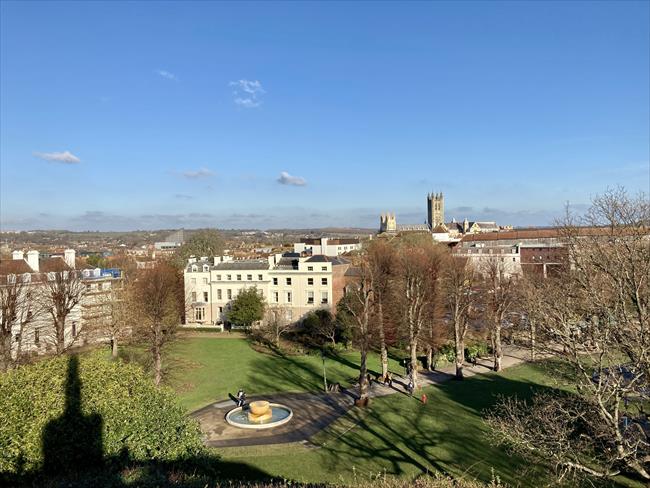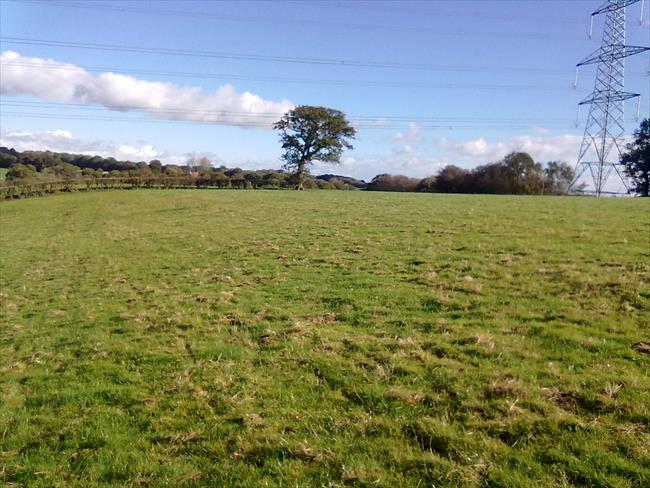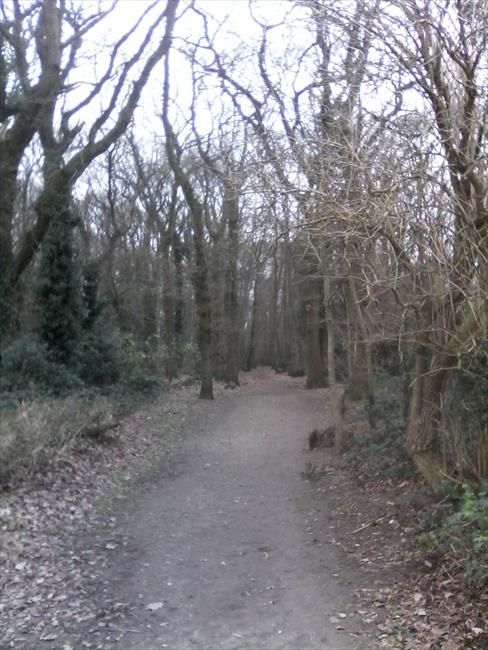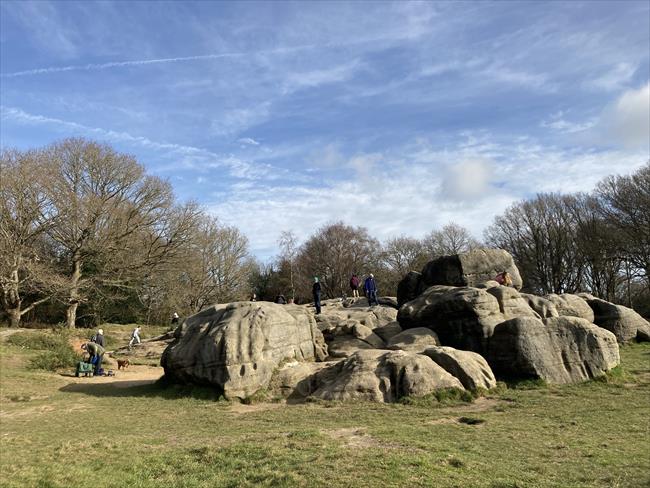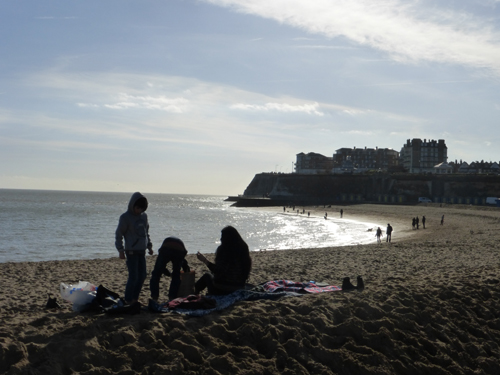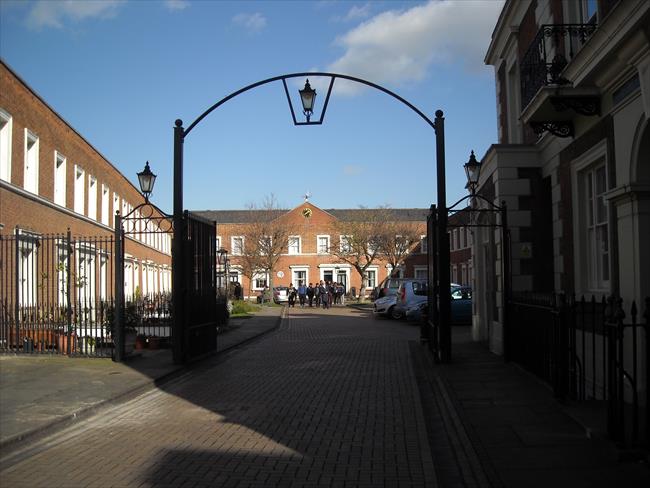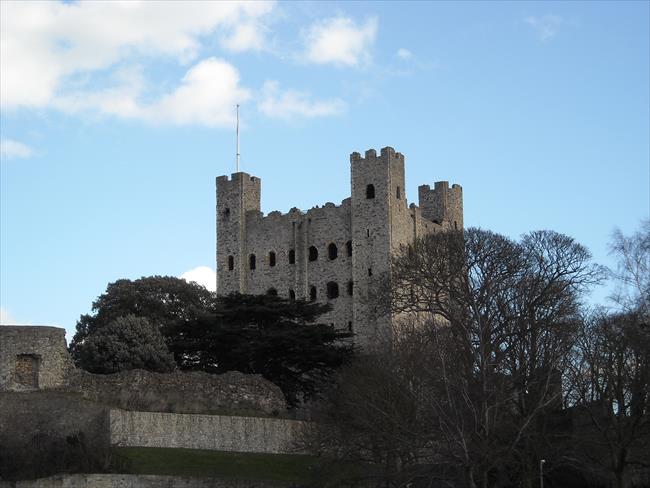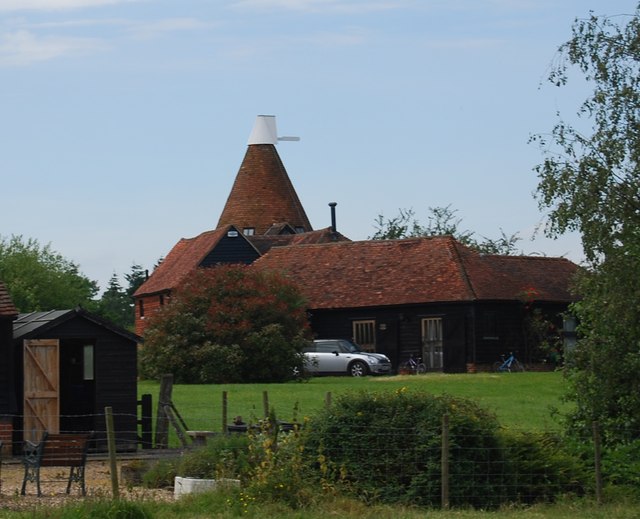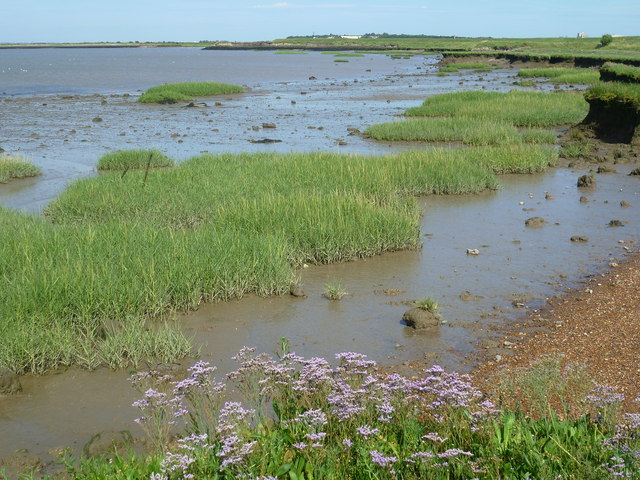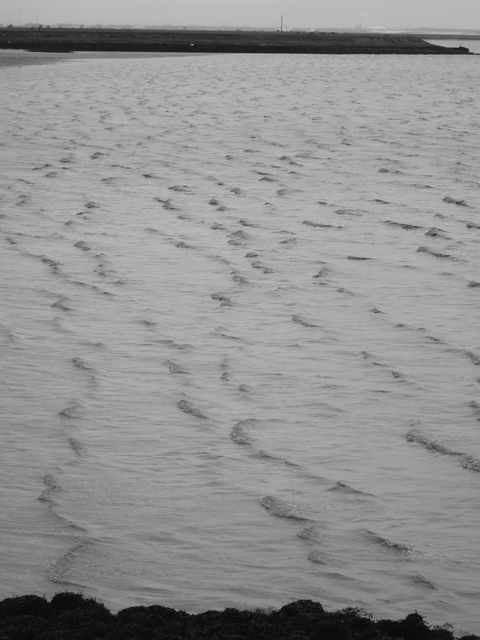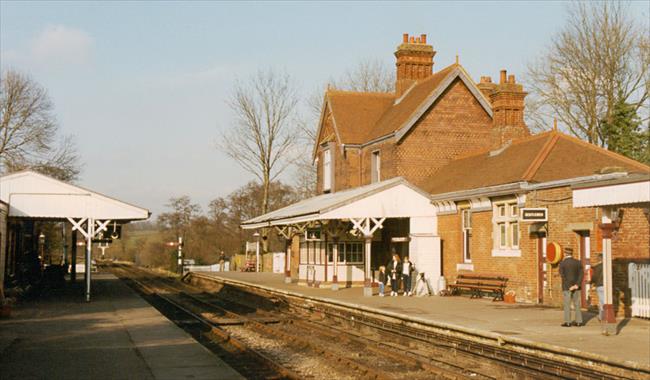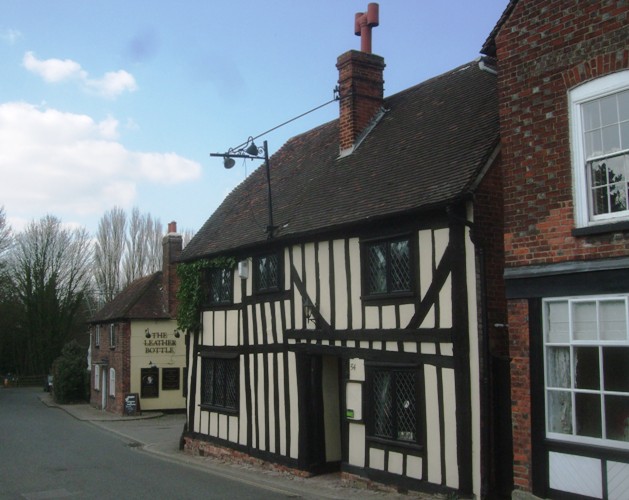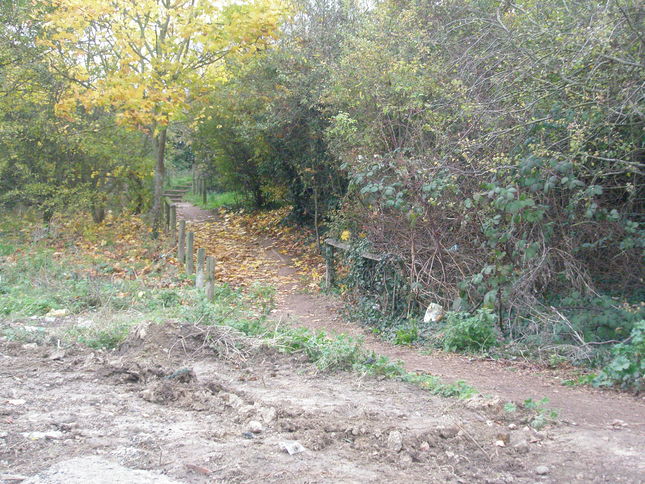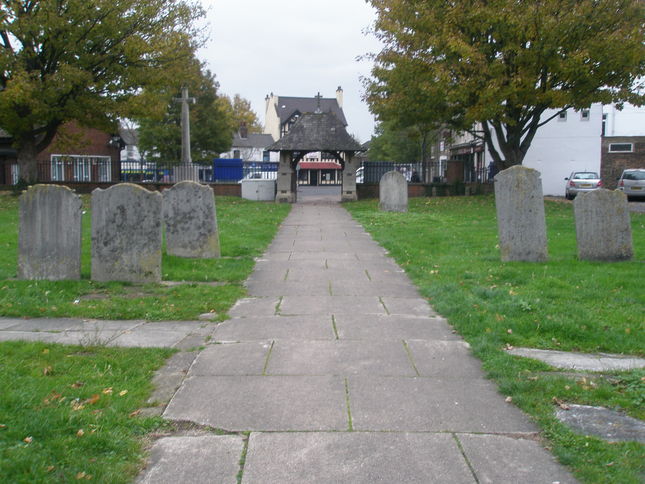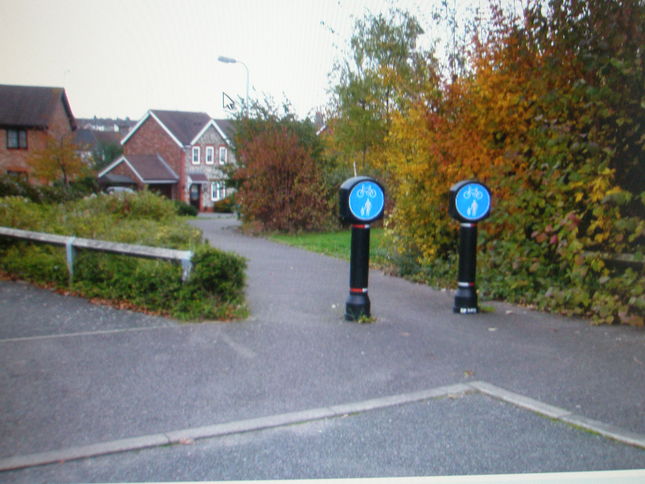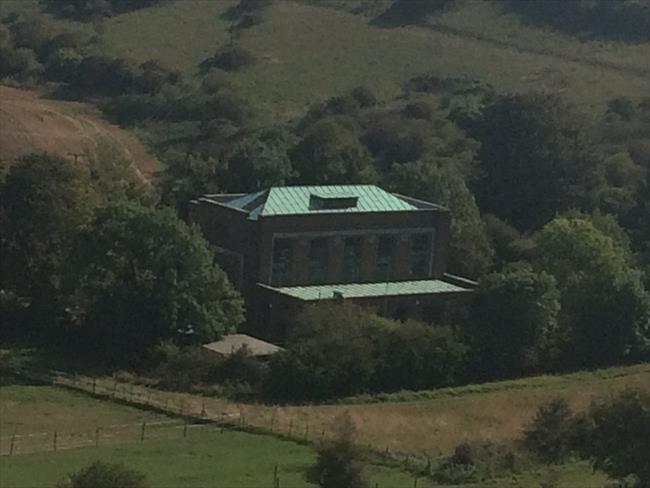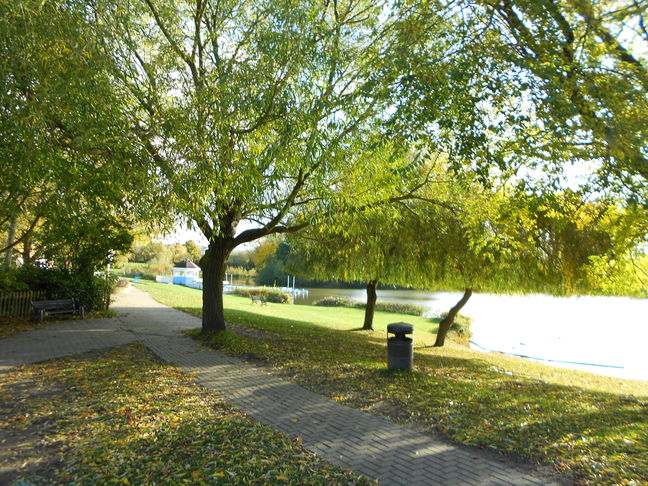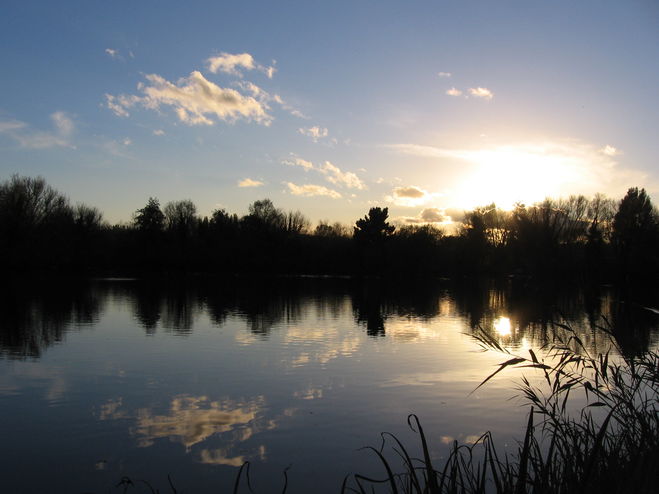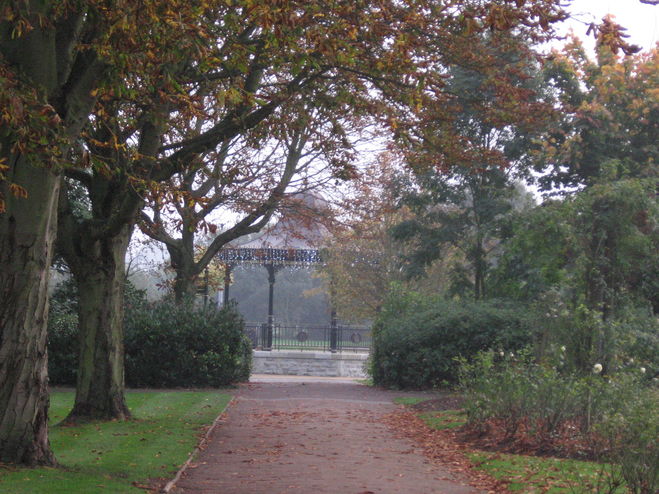1
Leave the station (A) and walk to the Parade and turn left to Seaview Road and walk down this to the end. Go through the barrier and turn left on the gravel track [people staying on the Holiday Park could join this track by any number of unofficial paths joining from the back of the Park]. If you walk on the path closest to the lakes to your right you will get the best view of the Sound Mirrors (B) on the other side; one, which is a slightly curved rectangular block, and another which is a huge circular dish are easily seen. A third smaller dish is less obvious. Keep forward and, after passing a couple of mounted information panels, you will pass between stiles, which you should ignore. Go right at the next stile.
(A) The Romney Hythe and Dymchurch Railway opened in 1927, this world famous miniature railway was requisitioned by the War Department in WWII — they even created the only miniature armoured train in the world — and was used extensively during the building of PLUTO (Pipe Line Under The Ocean) which fuelled the Allied invasion force. Now a popular tourist attraction, it is still used to ferry school children and runs throughout the year. (B) Sound Mirrors, A forerunner of radar, the sound mirrors were designed to focus the sound of enemy aeroplanes approaching Britain across the English Channel. They worked but the development of faster aircraft meant that they were within sight by the time they had been located. The only way of getting up close to the sound mirrors is by going to an open day run by the RSPB. It is well worth doing – the mirrors really are impressive close up.
2
Go diagonally left at first to pick up a more obvious track which should take you just to the left of a cream-coloured, covered, reservoir (there is a tall water-tower to its right). Keep forward between buildings; cross a railway line onto a concrete track into an RSPB reserve. (C) Continue on shingle, seizing the opportunity now and again to walk along the left-hand bank to view the vast number of birds usually gathered on the water. At the end, go through a gate with a car park on the left, continue to a road.
(C) Dungeness, the RSPB's oldest nature reserve, occupies nearly 1,000 hectares. The reserve is part of the Dungeness National Nature Reserve and a Site of Special Scientific Interest. In winter, you can see hundreds of water birds on the lakes. In spring and autumn, migrating birds pass through on their way to their breeding grounds or winter homes. In spring and summer, there's plenty of other wildlife to spot too: from dazzling dragonflies and fluttering butterflies to croaking frogs and colourful wildflowers. The great variety of wildlife at Dungeness and its strangely beautiful landscape make a visit worthwhile at any time of year.
3
Cross diagonally left to a gate before a cattle grid to follow, what is, at first, a grassy footpath. From now on you should aim roughly for the broader, right-hand lighthouse in the distance. The path goes between scrub left and shingle right. Join the lakeside on the left. Pass an RSPB viewpoint with bench. Follow the narrow path along a strip between two more lakes. At the end, follow a waymarker to the left-edge of a clump of trees ahead (this is hiding a small lake). Go right to keep the trees and bushes right (there are posts marking the direction). Near the end of the vegetation, go diagonally left on a vague track, once again, aiming for the lighthouse [if you hear gunfire here it will be the result of military manoeuvres beyond the power stations]. There are posts marking this track but they are few and far between. If all has gone well, you will reach a gate and road.
4
Cross the road leading to the power station (D) and almost immediately, go right on path towards the prominent Coastguard Cottages and mound. Go right of mound and left at cottages on wide track. Fork right to join lane. Reach some hard-standing and go left toward the Old Lighthouse (E) with the station to left.
(D) Dungeness Power station, which you will see to the left was connected to the National Grid in 1965, had two nuclear reactors is now being decommissioned. It was retired on the 31 December 2006 at which point it was the oldest operating nuclear power station in the world. While Dungeness A earned its retirement after 41 years of operating, Dungeness B, on the right, had a troublesome career. It started generating power in 1983, 13 years behind schedule and at four times the cost estimated to get it up and running. The ageing reactor had been due to decommission in 2018 but will now remain until 2028 as a result of £150m extra investment.(E) The old lighthouse took 3 years to build before it was opened by the Prince of Wales in 1904. It survived two world wars before decommission in 1960. For 56 years it provided a welcome land light to vessels negotiating the perils of the English Channel. The lighthouse now stands more than 500 metres from High Water Mark. Its navigational light was obscured by the nuclear power station erected approximately a quarter of a mile to the west. This necessitated the building of the New Lighthouse
5
At the lane junction there is a post that marks the start of a path that takes you overland to the Britannia pub. From here, join the coastal road and go left, passing the New Lighthouse (F) and eventually reaching Derek Jarman’s Prospect Cottage (G) and garden on left. [The cottage is painted black and has yellow trimmings].
(F) The new, 43m high, lighthouse was brought into operation in 1961. The tower, which rises from a white concrete base in the form of a spiral ramp, is capable of automatic operation. It has been floodlit to assist identification from seaward. This floodlighting has reduced the bird mortality rate during the migration season.(G) When the director and artist Derek Jarman began making his garden on the great shingle expanse outside his cottage which he purchased in 1986, local fishermen feared something occult was afoot. “People thought I was building a garden for magical purposes,” Jarman said at the time, “a white witch out to get the nuclear power station.” After his death in 1994 and the later possibility of the house being sold privately, Art Fund launched a campaign in January 2020 to raise money for "a permanently funded programme to conserve and maintain the building, its contents and its garden for the future".Plans are underway to open the house and garden for visitors
6
Turn inland immediately after the cottage ‘boundary’ to reach a path marked by a large stake, go left. At a power-line junction box, veer gradually right to cross a junction of railway tracks alongside a house. Now keep forward towards the Old Lighthouse, crossing the track again on the way. As you get closer, aim for a point about 70m to the left of the station. Cross the railway line and go right to catch your train.

